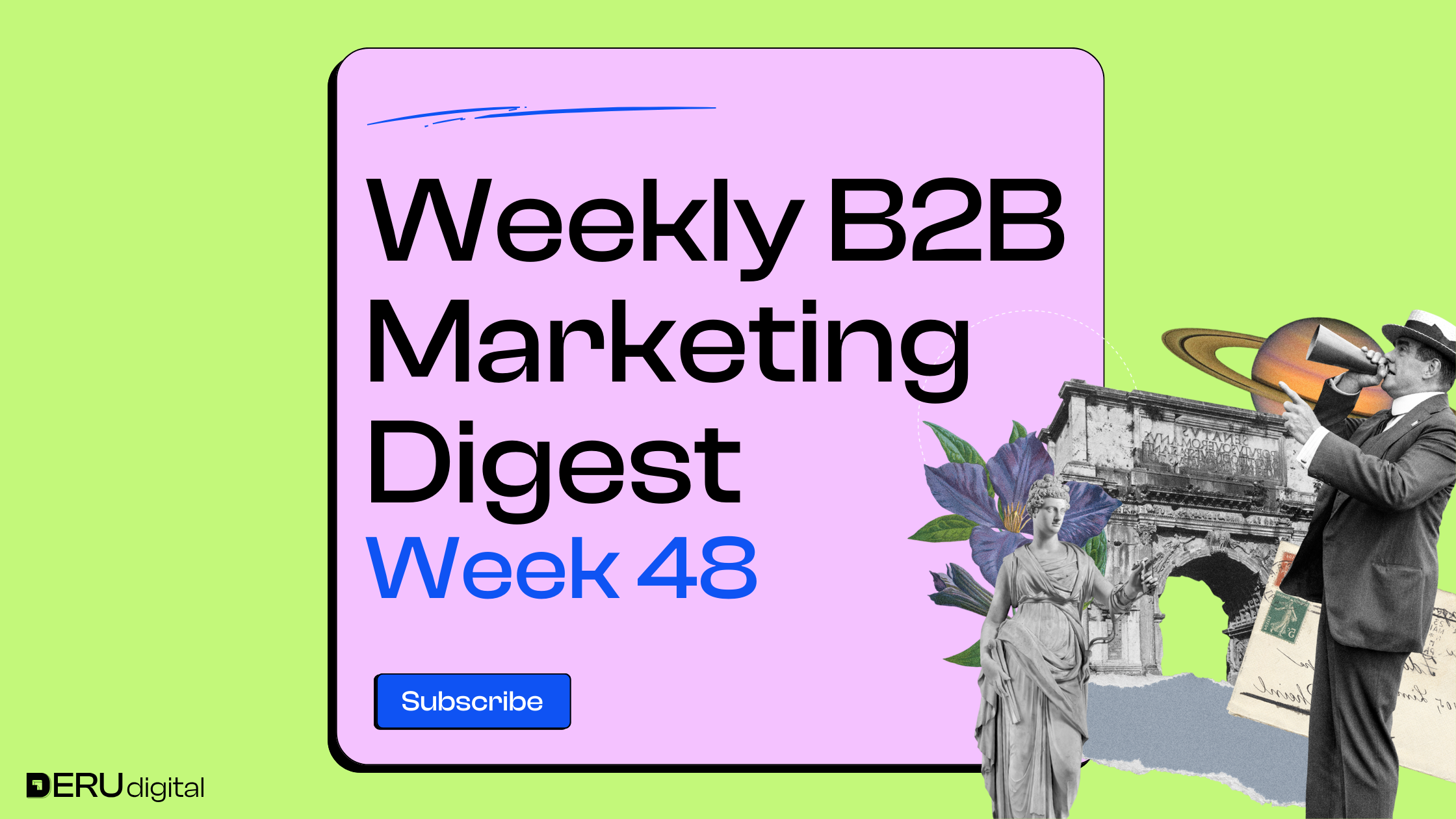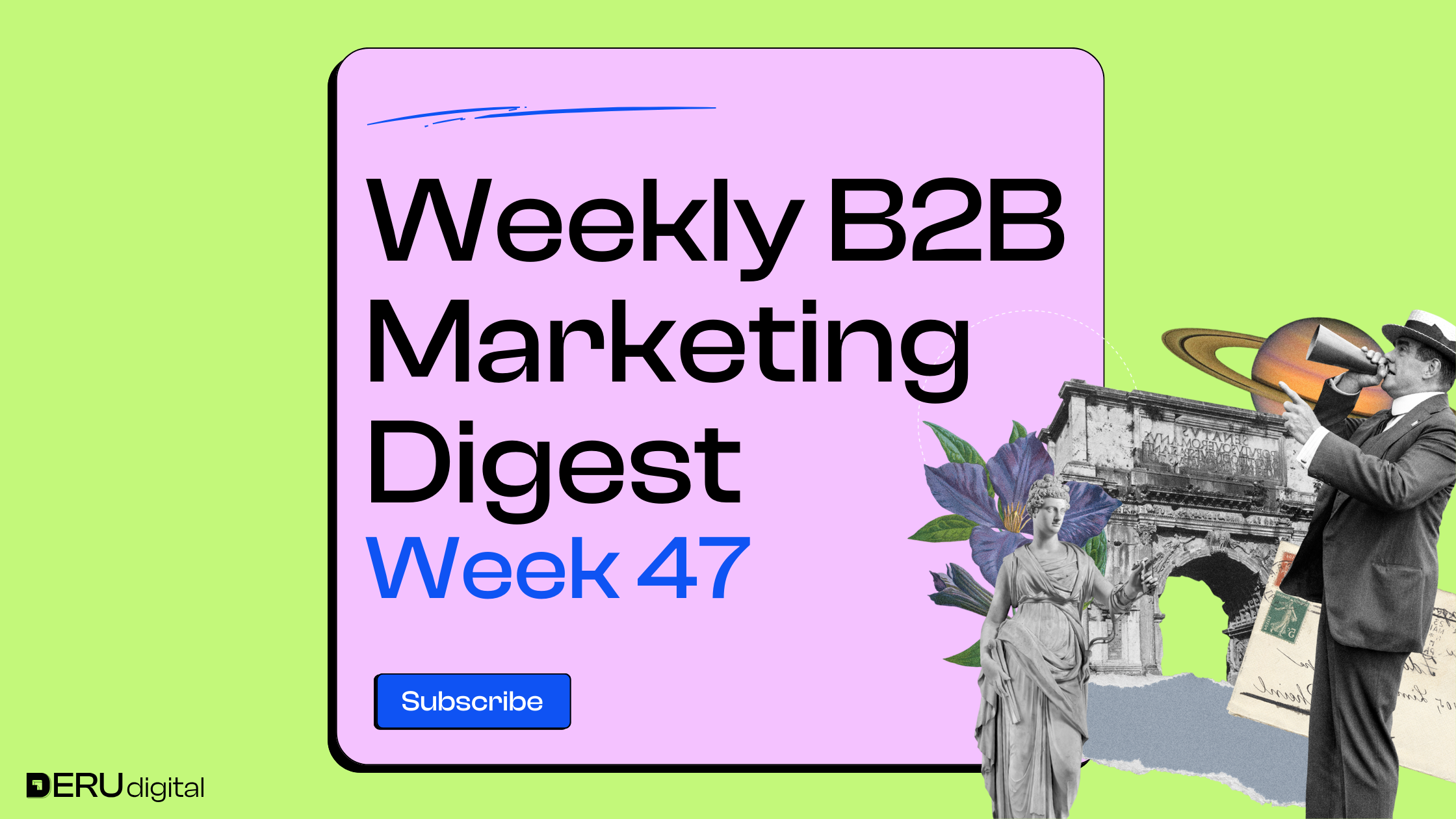


INSIGHTS FROM EXPERTS ON LINKEDIN
Tas Bober talks about how many landing pages jump straight to high-friction CTAs like demos and sales calls, even when buyers aren’t ready. She breaks down three levels of offers and shows why matching the ask to the buyer’s stage makes pages convert better. Tas makes the case for slowing down and giving people the right next step instead of pushing too hard too early.

Josh Blyskal explains that ChatGPT is now mentioning fewer brands per response and visibility has dropped across the board after a big structural update. He believes the shift toward entity recognition is laying the groundwork for ChatGPT Shopping, where brands need to be validated across sources like Wikipedia, Reddit and review platforms to show up. Josh says the gap between top and lower-ranked brands is shrinking, which creates more room for challengers.

Jean Bonnenfant shares Elena Verna’s take that attribution, especially last-click, misses most of what influences a buyer, since real decisions come from a mix of touchpoints spread out over time. She highlights how Google often gets credit for demand it didn’t create and why marketers need to look beyond dashboards to things like surveys, MMM and creative experiments. Jean brings it back to the idea that marketing is about understanding people, not just numbers.
Bram Van der Hallen calls out the obsession with fancy frameworks and complex Meta setups, reminding marketers that performance comes from basics like a strong offer, clear goals and good creative. He explains that over-splitting campaigns only limits learning, weakens results and wastes time. Bram argues that Meta works best when you stop micromanaging and let the algorithm do its job.
Morgan J Ingram says most companies fail at social selling because they force everyone to “do LinkedIn” without a real plan. He breaks down a practical approach: start with volunteers, test with SDRs, document what works and build momentum from the team up. Morgan makes the point that social selling is about relevance, personal connection and culture, not forced posting and generic DMs.
Anthony Blatner is excited that LinkedIn is finally adding flexible ad creation but says the current version isn’t what advertisers really need. Instead of letting users pair specific creatives and copy, LinkedIn mixes everything automatically, which doesn’t work for B2B campaigns. Anthony urges LinkedIn to build the feature so marketers can manually match the right assets together.

Julia Kinner explains why many companies’ segmentation models don’t actually help them prioritize or make better decisions. She points out the most common issues: no sense of value or right to win, segments that can’t be acted on and a lack of clear path-to-purchase data. Julia says if your segmentation hits too many of those problems, it’s probably time to rebuild it properly.

Brendan Hufford explains that he walked away from three clients because they couldn’t answer three basic questions: who their ICP really is, what pain actually drives their decisions, and which single problem they’re willing to own. He shows how vague answers lead to checkbox marketing, while clarity around one deeply-owned problem leads to real authority and impactful content.
Peep Laja shares what he learned after running multiple original research studies: the topic matters more than anything, repeating strong studies turns them into long-term assets, and distribution partnerships make a huge difference. He argues that original research is still one of the smartest plays in B2B SaaS – especially as AI makes generic content easy and forgettable.
Curtis Howland breaks down how to diagnose ad performance by separating creative metrics from media buying metrics. He explains that grouped data hides real issues and that both teams impact CPA and ROAS differently. His point: measure each side independently so you fix the right thing instead of blowing up a system that’s actually working.
WHAT'S NEW IN THE INDUSTRY
Advertisers can now see channel-level performance for all Performance Max campaigns globally, giving clearer insight into where traffic is coming from. Reporting for Search partners is coming soon, along with access from MCC accounts. The added transparency helps teams better understand how different channels contribute to results.

YouTube is making shoppable sidebars in horizontal mobile ads permanent by removing the option to close them. The panel now stays visible throughout playback, which boosts ad visibility but blocks part of the video and may affect creative performance. The change was first noticed by Anthony Higman and signals a push toward more persistent ad elements.

Google is adding asset-level reporting to Display, giving advertisers clearer visibility into how each creative performs. You’ll be able to compare assets, see when they were last updated, and make better decisions about what to keep or refresh, similar to what’s already available in Performance Max. The help page is live, even though the feature hasn’t fully rolled out yet.

The latest version of Google Ads Editor introduces smarter automation, clearer reporting, and more control over campaign settings. Highlights include campaign-level negatives for Performance Max, search term reporting, scheduled link checks, account-level exclusions, enhanced video generation, and easier editing for lead forms and URLs. Google also retired older ad types and replaced manual CPV bidding with AI-powered Video View campaigns.

That’s the scoop for this week! If you found this valuable and any useful insights caught your eye, feel free to share them with your network.
Until next week!



